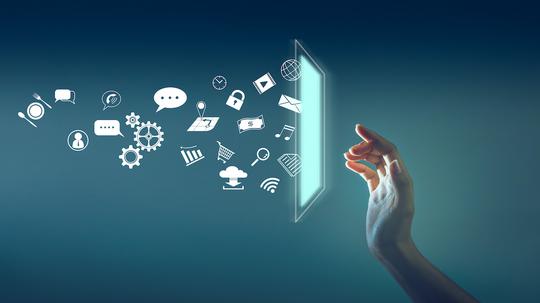
For 500 years, a watch’s sole purpose was to tell time. Today, watches have become an ever-growing extension of one’s cell phone, buzzing wrists when sitting too long, analyzing pulse rates, sleep patterns, stress levels, and more. This action of connecting data to and between real-world physical objects, devices and systems is called the Internet of Things (IoT).
IoT technology creates a world where practically all objects and people can be seamlessly interconnected. Internet of Things is somewhat of a misnomer because devices and systems do not necessarily need to be connected to the internet; only to a network while also being individually addressable. We have already widely adopted many IoT devices into our everyday lives including smart doorbells, refrigerators, thermostats, printers, cars, and TVs. While these types of consumer-focused smart tech and home automation products are the most common examples of IoT application, today, IoT technology benefits an increasingly wide array of industries.
For example, IoT technology is utilized to enable remote health care monitoring, connecting this to the delivery of hospital-level medical care services inside our homes. It powers “smart boards” that facilitate interactive learning in our schools. It even powers smart greenhouses that increase crop efficiency and productivity in the world of agriculture. Many businesses are quickly realizing that IoT technology can deliver better data to track customer experiences, allowing companies to identify and analyze trends that drive business growth.
According to Intel, the global market for IoT technology will reach $6.2 trillion by 2025, and 30 percent will be from health care which already relies heavily on IoT. As the IoT market continues to expand rapidly across all industry sectors, there is an increasingly desperate need for skilled tech talent capable of working with IoT technology including developers, architects, engineers, and coders.
Once organizations implement IoT software and roll out new systems, it also becomes imperative to educate employees about technological and process changes, and potential adjustments to their roles. Go-Live Support generates enthusiasm and adoption when implementing an IoT shift and is another area that requires specialized talent.
CSI Companies’ Healthcare IT division was named the 2022 Best in KLAS for Go-Live Support for the third time in the past four years. KLAS is a nationally recognized organization that provides honest and impartial health care IT research to support the health care industry. Their Best in KLAS report recognizes software and services companies that excel in helping healthcare professionals improve patient care.
CSI Companies’ Healthcare IT division has long been recognized not only for its high-level software development and systems integration specialists, but also for its strong Go-Live support and ability to quickly supply well-vetted resources.
Alyssa Tillery, division president of CSI Healthcare IT, believes the outcome is a testament to CSI’s steadfast commitment to outstanding service by providing uniquely skilled technical talent.
“For CSI, Go-Live success is rooted in matching the best consultant to each role, which we do by learning our client’s unique culture and coupling detailed planning with a thorough vetting process,” says Tillery.
There’s no doubt that IoT technology will continue to connect many systems, devices, and objects with critical data. Having the right talent on board will help ensure that businesses can make the most of IoT systems, and this exciting new world.